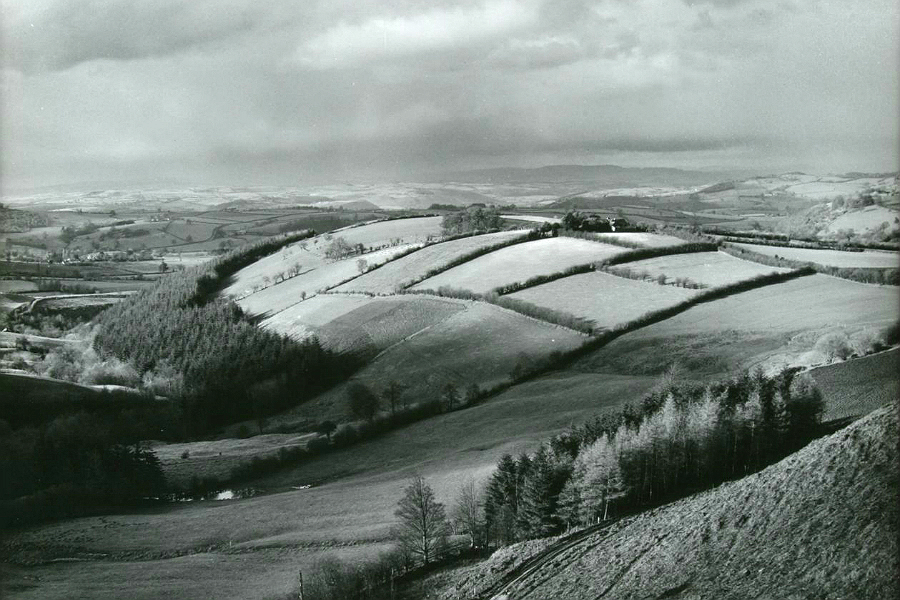Edward Chambré-Hardman – Landscapes

Keith W Roberts considers E. Chambré-Hardman’s landscapes, the creative passion-projects to his famed commercial portraiture…
Edward Chambré-Hardman (originally from Ireland) is arguably Liverpool’s equivalent of London’s Emil Otto Hoppé, whose economic sustenance, like Hardman, lay in the success of his commercial pictorial portraiture business. Hoppé’s portraits serve like a who’s who of London society from around 1910 to the end of WWII, including anybody of significance or note within politics, literature, arts or theatre.
Although Hardman’s studio at 59 Rodney Street was a far cry from Hoppé’s studio at Millais House, Kensington (named so after the previous occupant, Sir John Everett Millais, the Pre-Raphaelite painter), both men made their initial photographic mark with portraits of the well-heeled from their respective cities. It was also as a result of this day-work that we now benefit from the vast collection of landscapes and cityscapes produced over their active decades.
This selection of pictorial landscapes at the Open Eye date from right across Hardman’s period of photographic activity, and provide an insight into the way in which he viewed the countryside in particular, with almost a desire for nostalgic documentation. This does make a refreshing change from the usual architectural work or cityscapes we normally associate with Hardman’s non-portraiture. Apart from the London Salon link, this sequence of images does, however, still remain fairly arbitrary in terms of selection and doesn’t really achieve anything other than represent vistas Hardman witnessed and subsequently decided to record.
It does have to be noted how beautifully presented these works are, demonstrating once again, Hardman’s exquisite technical language. He was a master at re-touching negatives and applied the red opaque fluid to much of his work in order to further control light. His most famous work, Birth of the Ark Royal (1950), is a classic example of how he manipulated the image, by subduing the inherent highlights, in order to provide emphasis upon the pure white ship, which like a ghost-ship almost rises out of the Mersey. This effect could not have been achieved without firstly darkening the prominent white gable-end of the house seen foregrounded to the left of the picture.
Predictably the work is once again segregated and categorised for the viewer, which misses the all-important connection between Hardman’s professional and private practice (i.e. Portraiture versus Landscape). It is interesting to analyse Hardman’s commercial activity from his studio register’s, which tells of a considerably increased portraiture workload during WWII, which would be expected. It is the existence of Hardman’s detailed records that sets him apart from others such as Hoppé, in terms of providing a detailed chronology of all his photographic activities and thus offering the ability to accurately determine who was being shot commercially, when he was privately creating these picturesque landscapes.
What is little known about Hardman is that he actually sold what was supposed to be his entire collection to Liverpool Library in 1975 for the grand sum of £2,000, which was probably in response to his exhibition in the same year at Liverpool University’s Senate House entitled 50 Years of Photography. This deal was brokered by the then City Head Librarian, Ralph Malbon, and funds where raised both nationally and regionally, a sizable proportion of which came directly from Sir John Moores.
It was only realised some 11 months after the collection had been taken receipt of by the Library, that Hardman had cherry picked anything that he had considered of any worth, including all his ‘topographical views’ (of which these 14 prints/negatives would have been included) and any notable portraits of dignitaries of the day, including Ivor Novello and Margot Fonteyn.
His entire collection, including negatives, prints, studio registers, indexes, diaries, notebooks and daybooks, are scheduled to be re-united during Spring this year, when the new Library development on William Brown Street opens its doors again for business.
Keith W Roberts
E. Chambré-Hardman continues @ the Open Eye Gallery until the 17th February





